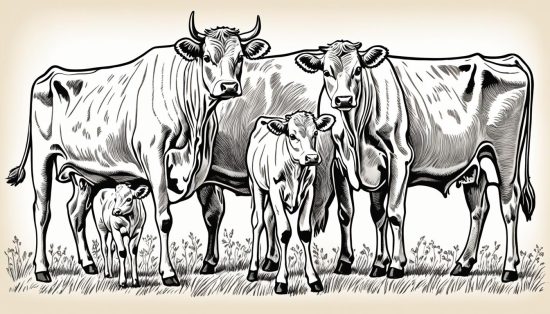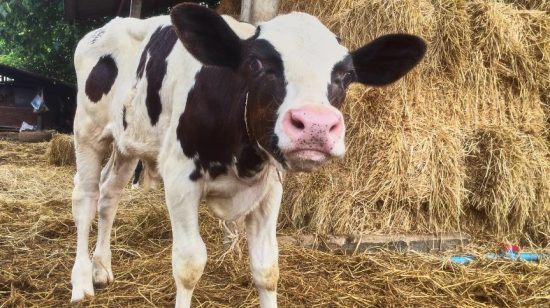How Much Does a Cow Cost? Prices for Cattle Explained
Discover what factors influence a cow’s price and the average cost of cattle in the U.S. Get insights into owning a bovine with our guide on how much does a cow cost.

Have you ever thought about the cost of owning a cow? It can be surprising. In the U.S., a cow may cost between $1,000 and $3,000. But there are more costs to consider.
Keeping a cow includes many expenses. You’ll need to pay for feed, minerals, vaccinations, and vet care. Plus, there’s fencing, labor, and other costs. It’s important to know these costs before you decide to own cows. This blog will look at cow prices in detail. We’ll explain what affects these prices. And we’ll break down the numbers. This way, you’ll have a clear idea of a cow’s true cost. If you’re a farmer, rancher, or just curious, you’ll learn a lot from this piece.
Fundamentals of Cattle Pricing
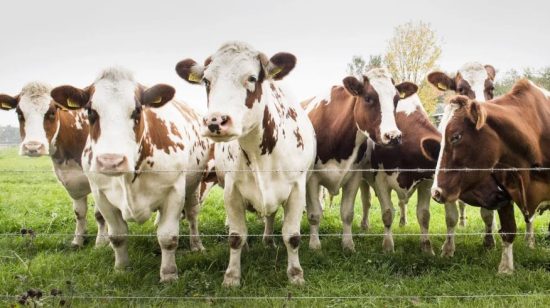
Grasping cattle pricing means understanding what affects the market. Supply, demand, and feed costs are key in setting cattle prices. Cattle pricing reflects the economy’s basic principles: supply and demand. A balance between available cattle and the buyers’ needs sets prices. Over supply means lower prices, but too much demand raises them. Factors altering cattle supply include breeding rates and weather. Government policies also play a part, affecting cattle counts. On the demand side, things like population growth and beef preferences swing buyer interest.
Impact of Feed Costs on Cattle Prices
Feed costs critically affect cattle pricing. The cost of feed deeply impacts the cost of raising cattle. The price and availability of feed components like corn and soybeans directly relate to feed costs. Weather, global markets, and transportation also change feed prices. High feed costs mean more expensive cattle. Producers raise prices to keep their businesses profitable. Yet, low feed costs can stabilize or even lower cattle prices. To fully understand cattle pricing, we must consider supply and demand, as well as feed costs. Awareness of these areas helps producers and buyers make better choices.
Initial and Long-Term Costs in Raising Cattle
Raising cattle means you need to know about the early and later costs. It’s important to get a grip on the costs of owning cows. This way, you can plan and budget well all the way through your cattle farming adventure.
Calculating Feed and Mineral Costs
Cattle need food and minerals regularly, which brings ongoing costs. They must have a mix of foods to stay healthy and produce well. This mix includes grass, hay, and even supplements. When figuring out how much you’ll spend on feed and minerals, think about how many cows you have. Consider what they eat daily and the prices of feed and minerals now. Keep in mind that these prices can change, depending on where you live and what’s available.
Investments in Health: Vaccinations and Veterinary Care
Keeping your cows healthy means investing in vaccinations and vet care. Vaccines help keep diseases away and your herd healthy. You should work with a vet to create a vaccine plan and set a vaccine budget. Along with shots, cows need regular vet check-ups and help with sickness or injuries. Don’t forget about managing calf births. It’s smart to save money for these vet costs because they help your cows live longer and do better work.
Other Expenses: Fencing, Labor, and Depreciation
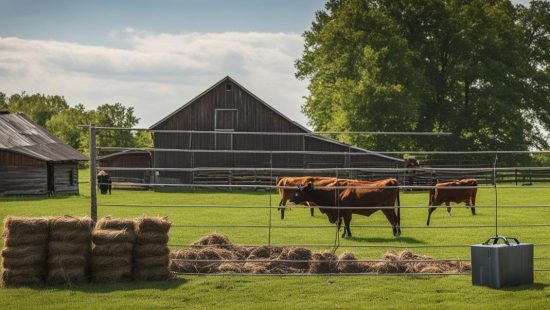
There’s more to spending than just food and vet bills. Good fences keep your cattle safe and direct their eating areas. The kind of fence you choose affects how much you spend at first and later. Labor is also a big part of the cost, especially if you need help feeding and managing your cattle. If your farm is big, you might have to hire more help. Or, you need to think about the time and effort you put in yourself. Depreciation is a hidden cost but an important one. Over time, things like tractors and barns lose their value. Knowing this helps you save up for new stuff when the time comes.
| Expense | Description |
|---|---|
| Feed and Mineral Costs | Cost of providing feed and mineral supplements to the cattle. |
| Vaccinations and Veterinary Care | Investments in keeping the cattle healthy through vaccinations and veterinary services. |
| Fencing | Cost of implementing and maintaining suitable fencing for cattle management. |
| Labor | Expenses associated with hiring additional labor or dedicating time to cattle care. |
| Depreciation | Cost of equipment and infrastructure depreciation over time. |
How Much Does a Cow Cost?
Understanding the costs of raising cows is crucial. It’s important to know what’s involved before you start. This way, you won’t be surprised by the costs later on.
There are many costs to think about when you own a cow.
- The buying price of a cow changes with its breed, age, and the market. You need to look at local prices and trends to get a good deal.
- Cows need good food to be healthy. The cost of feed depends on the type and how much your cow needs.
- Like us, cows need check-ups and medicine. Regular care helps keep them healthy but can be expensive.
- A cow needs a warm, safe place and a fence to stay in. This is important for their well-being.
- You might need to buy things like food troughs or grooming tools. These are one-time buys that also add to the cost.
- If you can’t handle everything yourself, you might need to pay for extra help.
Here’s a typical breakdown of what it costs to keep a cow:
| Expense | Cost Range |
|---|---|
| Purchase Price | $500 – $2,500 |
| Feed and Nutrition | $900 – $1,200 per year |
| Veterinary Care | $200 – $400 per year |
| Shelter and Fencing | $500 – $1,000 |
| Equipment and Supplies | $300 – $500 |
| Labor Costs | Varies |
These numbers are just estimates. Actual costs can change based on where you are, the size of your herd, and how you manage it. Remember, these costs are ongoing and you need to keep track of them in your budget.
Comparing Market Prices: Auctions vs Direct Sales
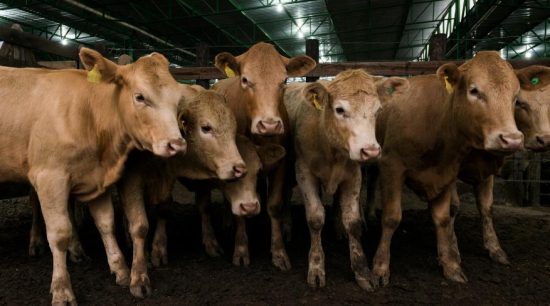
Market prices for cattle can be decided at auctions or through direct sales. Knowing the differences between these methods can help you make better choices. This way, you can ensure you’re getting good value when trading cattle.
When looking at cattle prices, the type of cattle is a key factor. Cattle are sorted by age, weight, breed, and quality. This sorting affects their value. They might be seen as feeder cattle, slaughter cattle, or breeding stock. Each type has its own worth. Feeder cattle, young ones meant for fattening and then slaughter, have different values from breeding stock. Breeding stock are selected for their good genes and ability to reproduce. Knowing about these categories helps you understand the value of cattle in your market. It lets you negotiate better deals.
Navigating Market Reports and Price Listings
Market reports and prices listings are crucial for those in the cattle business. They keep everyone updated on the latest market trends. These reports tell you the average cattle prices, regional differences, and how the market is doing.
It’s important to understand what type of cattle the reported prices are for. That way, you can compare prices wisely. Remember, prices in these reports can differ based on their sources and areas. Stick to sources that are known for providing accurate and current information. This ensures you use reliable data for your decisions.
| Comparison Factors | Auctions | Direct Sales |
|---|---|---|
| Price Transparency | High | Can Vary |
| Sale Volume | Variable | Potentially Higher |
| Opportunity for Negotiation | Yes | Some |
| Market Competition | Intense | Depends on the Specific Sale |
| Time Considerations | Might Require Attending Auctions | More Flexibility |
Global Influences on Local Cattle Prices
Local cattle prices don’t just depend on what’s happening nearby. It’s also about what’s going on in the world and at big international markets. Global stuff has a big effect on the prices we see at home. First off, how much beef the world wants really matters. When more people in different countries eat beef, they need more cattle. This can make the prices of cattle go up.
Think about the things like feed, labor, and how to get cattle from one place to another. Their prices can change because of things happening all over the world. For example, if feeding cattle costs more because of a drought, raising cattle could also cost more. Trade deals and taxes on imports and exports also influence cattle prices. If the rules about bringing cattle in change, local sellers might be able to sell more. This can make the prices they ask for go up.
To sum it all up, knowing about global stuff is key for anyone wanting to buy cattle. Keep an eye on trends and what’s going on in big markets. This way, you can make smarter choices when looking at cattle prices.
FAQs on How Much Does a Cow Cost
What factors influence the cost of a cow?
Several factors impact the cost of a cow, including its breed, age, size, health, and purpose (e.g., dairy or beef). Other considerations include geographic location, market demand, and whether the cow is sold individually or as part of a group.
What is the average cost of a cow?
Generally, dairy cows tend to be more expensive than beef cows due to their higher milk-producing capabilities. On average, prices can range from a few hundred to several thousand dollars per cow.
Are there additional expenses besides the initial purchase price?
Yes, there are additional expenses to consider beyond the initial purchase price. These may include transportation costs, veterinary care, feed, housing, equipment, insurance, and other maintenance expenses. Additionally, ongoing costs for feed and healthcare should be factored into the overall ownership expenses.
Can I buy a cow directly from a farm or auction?
Yes, you can purchase a cow directly from a farm, livestock auction, or through private sales. It’s essential to research reputable sellers, inspect the cow’s health and condition, and understand any associated paperwork or documentation required for the transaction.
Are there financing options available for purchasing a cow?
Some financial institutions offer loans or financing options specifically for agricultural purposes, including purchasing livestock. Additionally, agricultural programs or grants may provide assistance to farmers or ranchers looking to invest in livestock. It’s advisable to explore these options and consult with financial advisors for personalized guidance.

